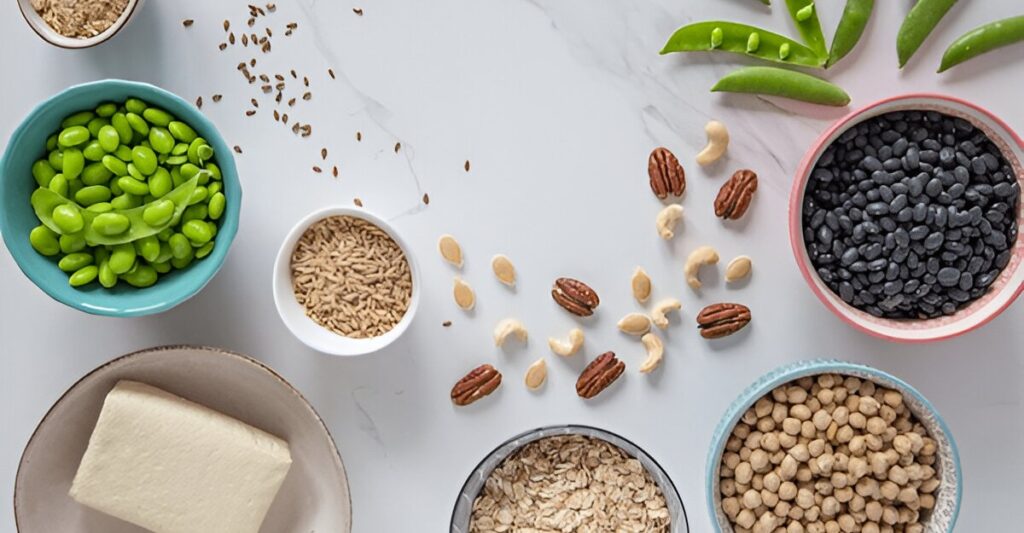Fasting has gained popularity as a powerful tool for weight management, metabolic health, and mental clarity. However, the nutritional considerations for intermittent fasting vs extended fasting differ significantly. Understanding these differences ensures you stay nourished, energized, and healthy while fasting. This guide explores how to approach nutrition for both fasting styles, offering practical tips to optimize your fasting experience.
What Are Intermittent Fasting and Extended Fasting?
Before diving into nutritional considerations, let’s clarify the two fasting approaches:
- Intermittent Fasting (IF): Involves cycling between eating and fasting periods, typically within a day or week. Popular methods include 16:8 (16 hours fasting, 8 hours eating) or 5:2 (five days of normal eating, two days of low-calorie intake).
- Extended Fasting (EF): Involves fasting for 24 hours or longer, often lasting multiple days. Extended fasts are less frequent and require careful preparation.
Both methods offer benefits like improved insulin sensitivity and cellular repair, but their nutritional demands vary due to duration and intensity. Let’s explore the fasting nutritional considerations for each.
Nutritional Considerations for Intermittent Fasting
Intermittent fasting is typically sustainable for long-term use, making it crucial to prioritize nutrient density during eating windows. Here’s how to approach nutrition:
1. Focus on Nutrient-Dense Foods
Since eating windows are shorter, every meal counts. Prioritize foods rich in vitamins, minerals, and macronutrients to avoid deficiencies.
- Proteins: Lean meats, fish, eggs, tofu, or legumes support muscle maintenance and satiety.
- Healthy Fats: Avocados, nuts, seeds, and olive oil provide sustained energy and fat-soluble vitamins.
- Complex Carbs: Whole grains, sweet potatoes, and fruits fuel energy needs and provide fiber.
- Micronutrients: Leafy greens, colorful vegetables, and berries deliver essential vitamins and antioxidants.
2. Balance Macronutrients
A balanced plate prevents energy crashes and supports overall health. Aim for meals with:
- 25–35% protein to preserve muscle mass.
- 20–30% healthy fats for hormone production.
- 40–50% complex carbs for sustained energy.
3. Stay Hydrated
Fasting can increase dehydration risk, especially if you’re active. Drink water, herbal teas, or electrolyte-rich beverages (without added sugars) during fasting and eating windows.
4. Time Your Meals Strategically
Align meals with your body’s needs. For example, break your fast with a balanced meal to stabilize blood sugar, and eat a nutrient-dense meal before fasting to sustain energy.
Sample Intermittent Fasting Meal Plan (16:8 Method)
- Break Fast (12 PM): Grilled chicken salad with spinach, avocado, cherry tomatoes, and quinoa (protein, fats, carbs, micronutrients).
- Snack (3 PM): Greek yogurt with blueberries and chia seeds (protein, antioxidants, fiber).
- Dinner (7 PM): Baked salmon, roasted sweet potatoes, and steamed broccoli (omega-3s, carbs, vitamins).
Key Tip
Avoid overeating during eating windows, as this can negate fasting benefits. Listen to hunger cues and prioritize quality over quantity.
Nutritional Considerations for Extended Fasting
Extended fasting places greater stress on the body, requiring careful preparation and recovery. Here are the key fasting nutritional considerations:
1. Pre-Fast Nutrition
Before an extended fast, prepare your body with nutrient-dense meals to build reserves.
- 2–3 Days Before: Increase intake of complex carbs (brown rice, oats) and healthy fats (nuts, olive oil) to store energy. Include potassium-rich foods (bananas, spinach) to support electrolyte balance.
- Day Before: Eat balanced meals with moderate protein, high-quality carbs, and vegetables. Avoid heavy, processed foods that may cause digestive discomfort.
2. Hydration and Electrolytes
During extended fasting, water and electrolyte balance are critical to prevent headaches, fatigue, or muscle cramps.
- Water: Aim for 2–3 liters daily, adjusting for activity and climate.
- Electrolytes: Sodium, potassium, and magnesium are essential. Sip on bone broth, or add a pinch of high-quality salt to water. Avoid sugary electrolyte drinks.
- Tip: Black coffee or unsweetened teas can be consumed in moderation but avoid overdoing caffeine, which can dehydrate.
3. Breaking the Fast
Refeeding after an extended fast requires caution to avoid digestive issues or refeeding syndrome (a rare but serious condition caused by rapid nutrient reintroduction).
- Start Small: Begin with easily digestible foods like bone broth, soup, or a small portion of cooked vegetables.
- Gradual Reintroduction: Over 1–2 days, slowly reintroduce proteins, fats, and carbs. For example:
- Day 1: Bone broth, mashed avocado, or a small smoothie.
- Day 2: Add eggs, steamed fish, or quinoa with vegetables.
- Avoid: High-sugar foods, heavy dairy, or fried foods, which can shock the digestive system.
4. Post-Fast Recovery
After an extended fast, focus on rebuilding nutrient stores. Eat balanced, nutrient-dense meals for several days, emphasizing whole foods and adequate protein to restore muscle mass.
Key Tip
Extended fasting is not suitable for everyone. Consult a healthcare provider, especially if you have medical conditions or are new to fasting.
Intermittent Fasting vs Extended Fasting: Key Nutritional Differences
| Aspect | Intermittent Fasting | Extended Fasting |
|---|---|---|
| Duration | Short fasting windows (e.g., 12–16 hours) | 24+ hours, often days |
| Nutritional Focus | Nutrient density during eating windows | Pre-fast prep and careful refeeding |
| Hydration Needs | Moderate; water and teas sufficient | High; electrolytes critical |
| Meal Planning | Balanced meals in eating windows | Strategic pre- and post-fast meals |
| Sustainability | Long-term, lifestyle-friendly | Periodic, requires more planning |
Lifestyle Tips to Support Fasting Nutritional Considerations
Whether you’re practicing intermittent or extended fasting, these habits enhance success:
- Monitor Your Body: Watch for signs of nutrient deficiencies (e.g., fatigue, hair loss) and adjust your diet as needed.
- Exercise Wisely: Pair fasting with light activities like walking or yoga. Avoid intense workouts during extended fasts.
- Sleep Well: Quality sleep supports hormone balance and recovery, enhancing fasting benefits.
- Consult Experts: A dietitian can tailor fasting nutritional considerations to your goals and health status.
When to Seek Medical Advice
Fasting is generally safe for healthy individuals, but certain groups—pregnant women, those with diabetes, or individuals with eating disorders—should avoid it. If you experience dizziness, extreme fatigue, or irregular heartbeats, stop fasting and consult a doctor. Regular check-ups can ensure your fasting nutritional considerations align with your health needs.
Conclusion
Navigating the nutritional considerations for intermittent fasting vs extended fasting empowers you to fast safely and effectively. Intermittent fasting thrives on consistent, nutrient-dense meals during eating windows, while extended fasting demands careful preparation, hydration, and refeeding. By prioritizing fasting nutritional considerations, you can harness the benefits of fasting while staying healthy and energized.
Ready to start your fasting journey? Use these tips to create a personalized plan that supports your body and goals!


